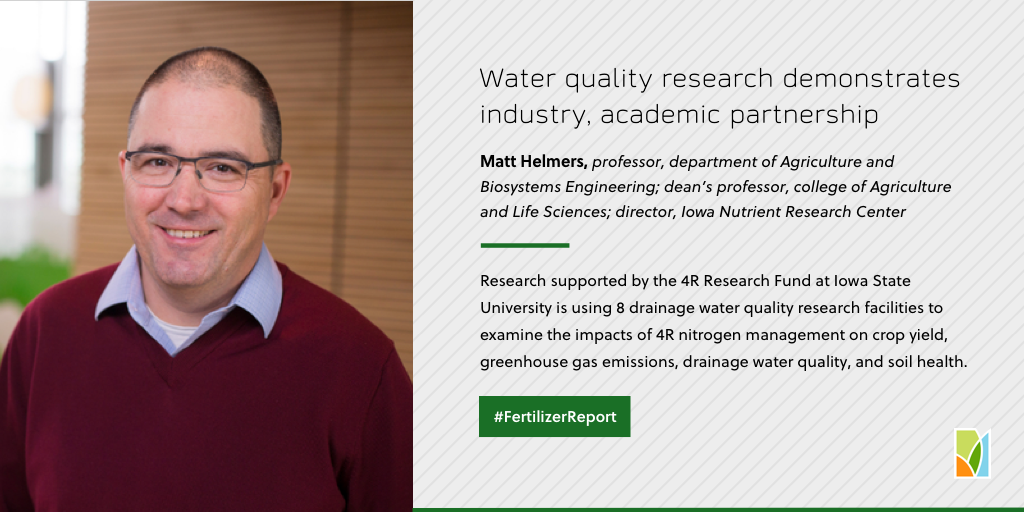This post is part of a series highlighting work across the fertilizer industry as featured in TFI’s State of the Fertilizer Industry Report. Visit www.fertilizerreport.org to learn more.
The concept of 4R Nutrient Stewardship has been used in some form in U.S. agriculture for at least 75 years. And while it has served farmers well over the years, knowledge gaps emerged as agriculture has gotten more precise with the advancement of technology. There is also a lack in understanding the impact of practices and technologies on the environment and crop yields. The fertilizer industry invested in the 4R Research Fund in 2013 to fill these knowledge gaps. To date, the industry has invested more than $8 million in research, which has been leveraged by another $8.8 million from outside sources.
Research based on the source, rate, timing, and placement of fertilizer isn’t new, but through the 4R Research Fund, the research community has come together to solve specific challenges impacting an industry and their farmer customers.
Matt Helmers, professor at Iowa State University and director of the Iowa Nutrient Research Center, has led 4R Research Fund projects since 2014. His team manages water quality research sites throughout Iowa. They work with farmers, stakeholders, and Extension specialists across the region to examine ways to increase adoption of conservation practices and provide opportunities for people to learn more about these practices.
Helmers and his team are using eight drainage water quality research facilities in the Upper Midwest to examine the impacts of 4R nitrogen management on crop yield, greenhouse gas emissions, drainage water quality, and soil health.
This project, called Nutri-Net, is a prime example of how a knowledge gap identified by the industry is being met by the academic community. Speaking of the project, Helmers said, “I think [Nutri-Net] is a great example of needs that the industry identified working with the academic community to develop research projects that can immediately answer some of those questions.”
The Nutri-Net project was born from the 4R Fund Technical Advisory Committee’s review of the first round of funding, and it became apparent that there were limited studies looking at nitrate leaching, greenhouse gas emissions, and crop yield. The committee, knowing there were multiple water quality drainage research facilities across the Midwest, posed the question of what could be studied.
“The industry engaged the academic community, and said, ‘Can you help us address some of these research gaps?’” Helmers said. “So, the academic community came together, looked at the facilities that we have and what type of research project could we put together in a comprehensive way to help address some of these questions.”
The academic community in the Midwest developed a project proposal for Nutri-Net, which ultimately received funding from the 4R Research Fund and the Foundation for Food and Agriculture Research.
“I don’t think that if the academic community had just sat in a room and discussed issues we want to address that we have as comprehensive a project as we have now,” Helmers said. “Nutri-Net is addressing the needs of the industry, looking at the metrics we need to collect, looking at the type of treatments that we need to have done. And the results we have are directly applicable to producers throughout the Midwest. By having that partnership, we were able to develop a research project that fills the gaps and will provide important information for growers throughout the Midwest.”
The results from this type of research, combined with continued progress in precision agriculture that aligns with 4R Nutrient Stewardship principles, provides unlimited potential to improve soil and crop performance.
“I think the, 4R Research Fund has really provided important resources to help address important challenges that are being faced by producers throughout the Midwest and really across the nation and Canada,” Helmers added. “I think this has been a great opportunity for many researchers to be involved with projects that are directly relevant to producers.”

